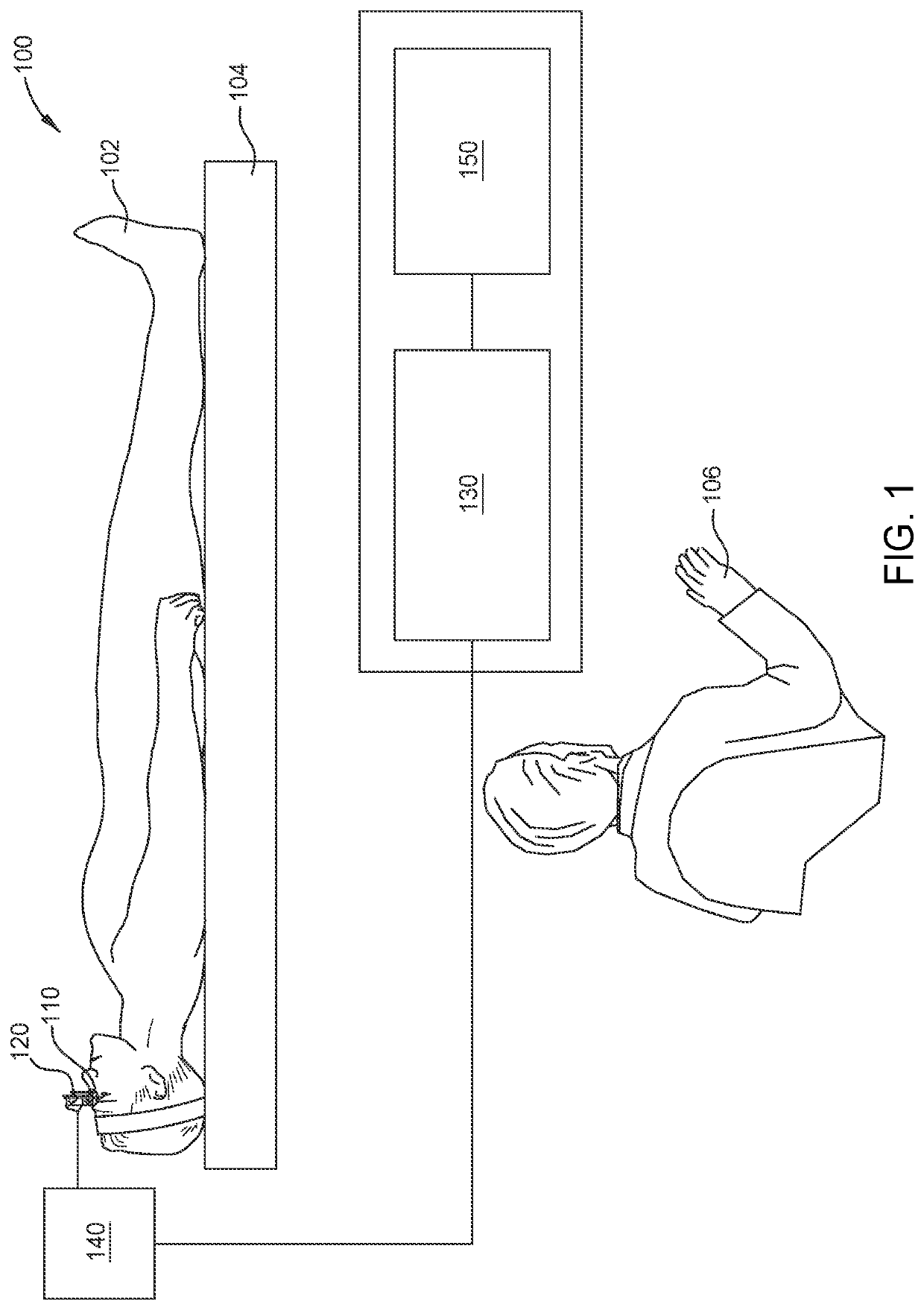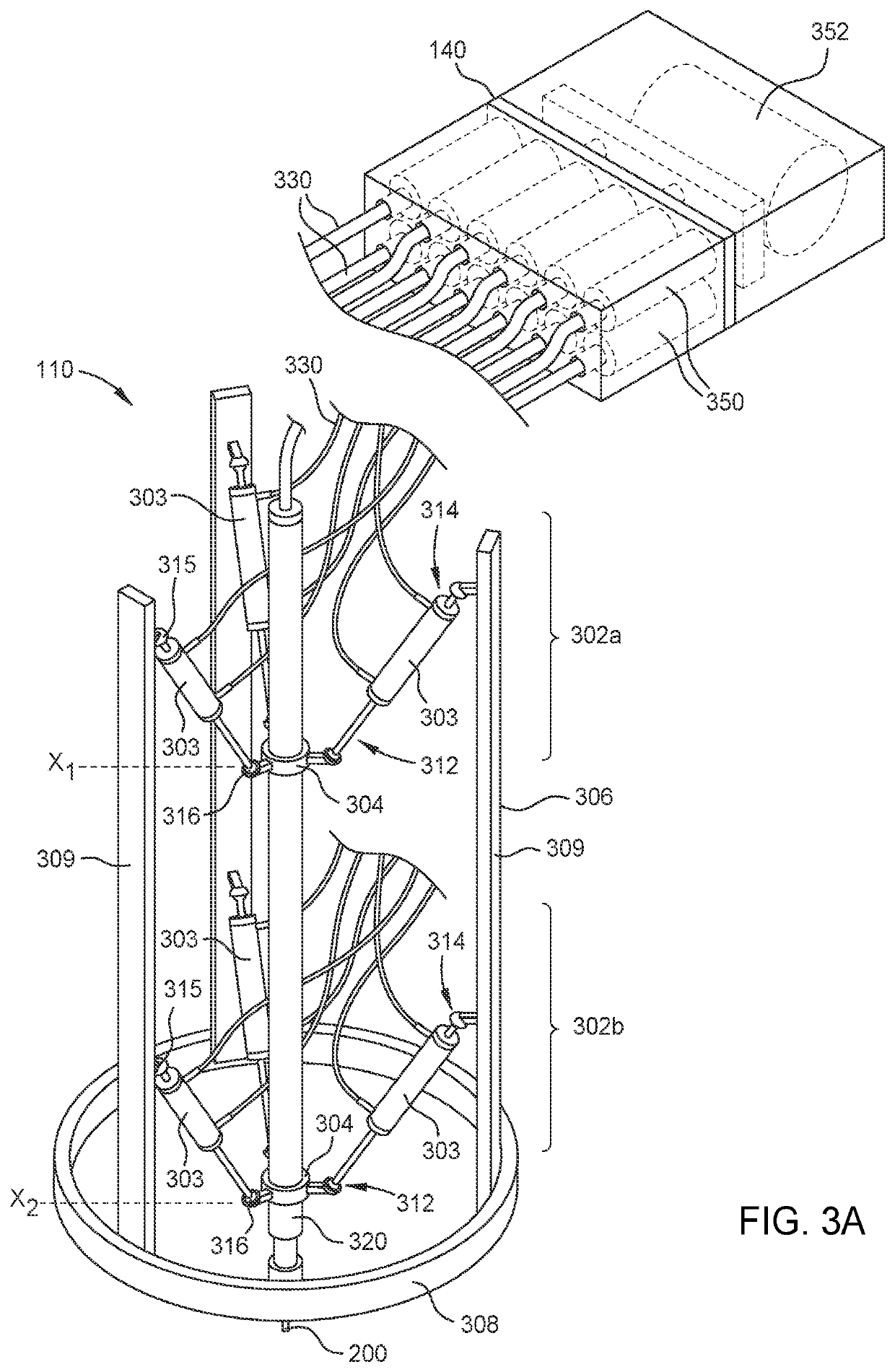Vitreoretinal surgery dexterity enhancement system
a technology of dexterity enhancement and vitreoretinal surgery, which is applied in the field of manipulation systems for ophthalmic microsurgical procedures, can solve the problems of limited operating room within the ocular space, poor visualization of the interior of the eye, and inherently restricted human sensory and motor limitations
- Summary
- Abstract
- Description
- Claims
- Application Information
AI Technical Summary
Benefits of technology
Problems solved by technology
Method used
Image
Examples
Embodiment Construction
[0022]The present disclosure generally relates to manipulation systems for surgical procedures, and more particularly, high dexterity manipulation systems for ophthalmic microsurgical procedures. In one embodiment, a surgical system includes a master apparatus controllably coupled to a slave apparatus. The slave apparatus is configured to couple to the head of a patient and includes a dual tripod structure having two pluralities of linear actuator links pivotally supporting a surgical tool shaft. The motions of the linear actuator links is controlled by saline hydraulics to provide at least 6 degrees of freedom for the surgical tool shaft during use thereof. In one embodiment, the slave apparatus further includes a redundant axis rotatable tool shaft, thus enabling 7 degrees of freedom for a surgical tool coupled thereto. The surgical system includes a plurality of sensors enabling forces of interaction between the slave apparatus and its environment to be reflected back to the mast...
PUM
 Login to View More
Login to View More Abstract
Description
Claims
Application Information
 Login to View More
Login to View More - R&D
- Intellectual Property
- Life Sciences
- Materials
- Tech Scout
- Unparalleled Data Quality
- Higher Quality Content
- 60% Fewer Hallucinations
Browse by: Latest US Patents, China's latest patents, Technical Efficacy Thesaurus, Application Domain, Technology Topic, Popular Technical Reports.
© 2025 PatSnap. All rights reserved.Legal|Privacy policy|Modern Slavery Act Transparency Statement|Sitemap|About US| Contact US: help@patsnap.com



